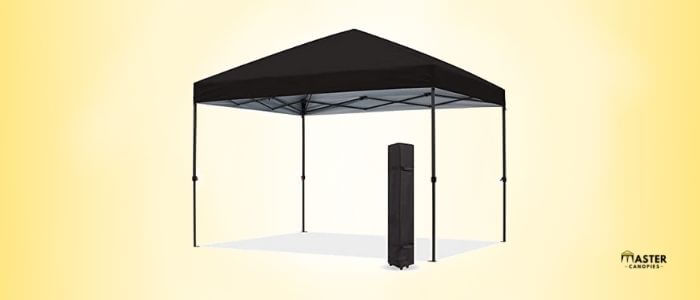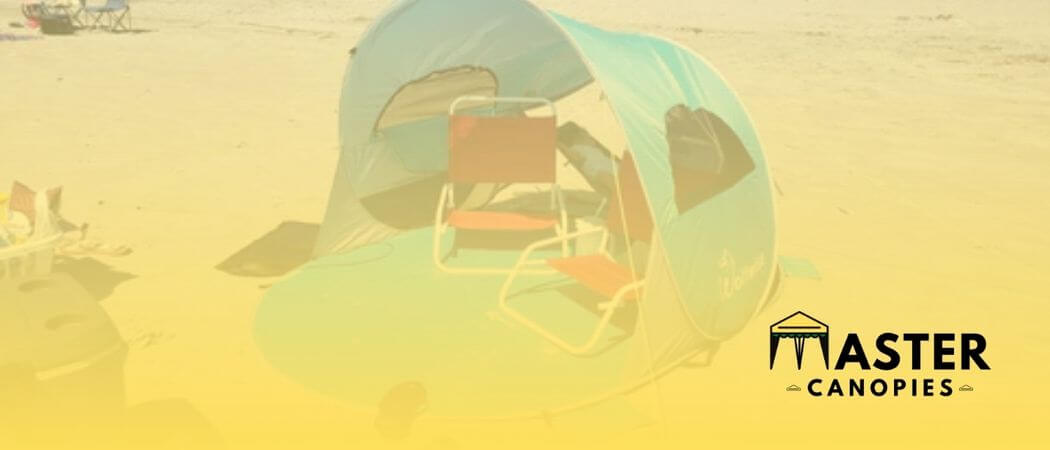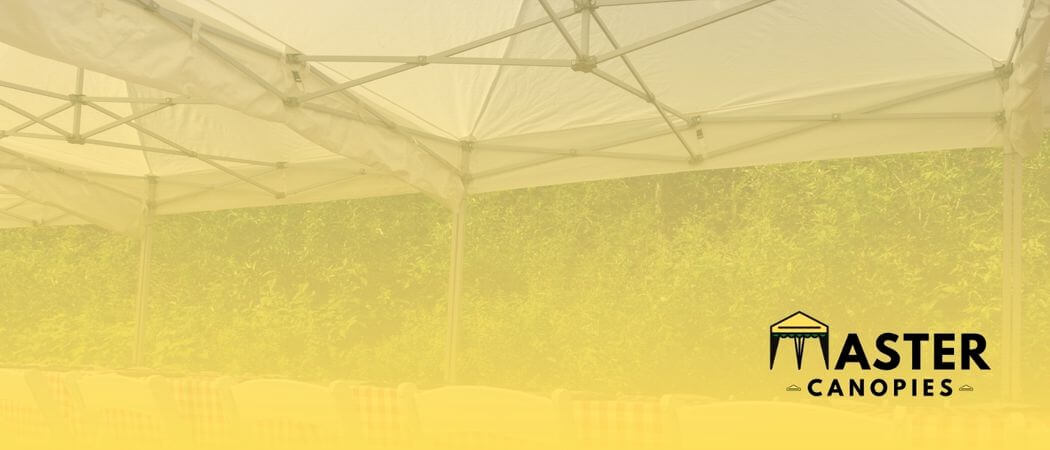Published June 14th, 2022 by Allen Campbell

Do you like the suggestion of camping but despise the hassle of putting up a tent? Then, a pop-up canopy might be ideal for you.
Throwing the tent on the ground causes it to erupt into a fully constructed tent.
However, before purchasing a pop-up canopy, make sure you know its advantages and disadvantages. In addition, it is essential to know how a pop-up canopy tent works to avoid mistakes.
Let’s get straight to it!

A pop-up canopy is a quick-set tent that ‘pops’ into form. Simply unzip the tent bag, remove the tent, and toss it into the air. The tent then expands to form a complete tent shape.
A pop-up canopy is said to be the simplest to put up. Following closely are instant tents, which contain pre-attached telescopic poles that may be stretched (like a telescope) to pitch the tent.
As a consequence, pop-up canopies are a fantastic alternative for first-time hikers.
However, their simplicity and overall user-friendliness come at a cost. They are not as light as hiking tents, are not suitable for harsh weather, and are often not as durable.
If you like to leave dirty footwear on the porch, you’re out of luck. Because these tents are pop-up, they do not have accessories like a vestibule or porch.
Pop-up canopies feature spring-loaded tent poles that are pre-attached to the tent body. The tent bag compresses the springs and folds the tent, but when you take it out of the bag, the springs push the tent poles to lengthen. The fast-growing tent poles force all of the tent walls into the correct positions, and the tent seems fully constructed in front of you.
This is not like a traditional tent, where you have a bag of tent poles that you must feed through fabric loops until the structure is built.
While putting up a pop-up canopy is as simple as pulling it out of its bag and tossing it on the floor, pegging it down and folding it away is a bit more complex.
When putting down a pop-up canopy, it must be folded in a precise way. It is up to the tentmaker to ensure that the instructions that come with the tent are followed.
To fold a pop-up tent, follow these steps:
Although some canopies are different to operate, most of them can be folded in this way.
Pop-up canopies are excellent for:
Pop-up canopies are not particularly long-lasting. They often are made with less expensive materials, such as fiberglass tent poles and polyester tent walls, although this isn’t always a problem. The major concern is around the tent poles’ longevity and the ability to repair the tent.
The tent poles, in particular, are prone to snapping in high winds. Furthermore, since they are pre-attached spring poles, they cannot be replaced if they break.
This implies that a damaged pop-up canopy usually means the replacement of the whole tent. However, a few tent manufacturers can replace the tent poles, so verify with the manufacturer before disposing of the tent.
In fine weather, pop-up canopies are waterproof. They are not, however, meant to withstand extreme weather, notably high winds, and heavy rain.
However, some pop-up canopies outperform others. In general, a waterproof tent will have:
A rain fly is also required to keep heavy rain out.
In high gusts, pop-up canopies may bend significantly, resulting in the poles breaking. This is due in part to the spring-style design of the tent poles, as well as the lower-cost materials used in constructing them.
Make sure to peg down the tent correctly and check the weather prediction before going camping.
As a general rule, if the pop-up canopy does not have a rainfly, it will most likely have condensation issues.
Condensation may be avoided by providing enough ventilation. Tents often include mesh walls and windows, and a rainfly may be placed over the top to ensure the tent is both well ventilated and rain-protected.
Check the ventilation of the tent before purchasing. Waking up in a pool of water may be very unpleasant.
To go camping with this, you should know how a pop-up canopy tent works and also what to look for in the perfect canopy tent.
Make certain that you will be adequately shielded from the weather by your pop-up tent, for starters. Also, because you can’t predict when it will start raining, you really need to have a tent that is waterproof.
There is always the possibility of an unexpected turn of events, it doesn’t matter whether the forecast calls for clear skies or simply partially overcast conditions. It is not a fun way to camp to be caught out in the wilderness with a lot of possessions getting wet, so spend some additional time looking for a pop-up tent that is waterproof.
There is a wide selection available, and having one gives you more peace of mind than having a model that is not waterproof.
In addition to this, one of the finest features of a pop-up tent is the fact that it is lightweight. As was said before, having a low total body weight might be beneficial in some situations, particularly when your outside event will provide some protection from the weather.
If you’re merely going to be staying at a tailgate party before or after a major event, there’s really no need to invest in an exceptionally durable tent. However, when you’re out hiking, one of your best options is to minimize the weight you carry with you.
When you have to carry everything you take on your back, even a little change in weight may have a significant effect over the course of many hours.
Given the size of the quick tent, there is a sufficient amount of room inside for you and one or two more people to sleep inside without feeling cramped. Not to mention the fact that the material itself provides a reasonable amount of ventilation and often includes a few mesh windows in the design.
It provides a multitude of advantages in a very small size, which is an incredible combo for campers who want to conserve room in their living quarters. First, however, you would need to make sure that the tent you’re purchasing is big enough for your use.
For instance, if you often go camping with your whole family, you would want to make sure that the tent is adequately big enough for everyone to comfortably lay underneath it.
Pop-up canopy tents are sold anywhere normal tents are sold. Visit your local independent outdoor shop to support your community and get gear advice. Tents are available online as well on Amazon.
Before purchase, examine reviews and other signs to know what you’re getting. Video lessons might be helpful for new users who want to learn how to use a pop-up canopy. Review sites let you compare tent pricing, compatibility, and features. Any outdoor night is worth the effort.

Allen is a full time writer at Mastercanopies.com and enjoys traveling around the United States and exploring nature. He enjoys writing about canopies as he believes they are extremely crucial in having a successful camping trip whether it be a trip to the beach, mountains, or the open plains.

Can You Put a Tent in the Dryer Safely? Published February 4th, 2023 by Allen Campbell Well, it’s no secret that a tent is a

How to Print on a Canopy: How to Print Custom Images/Logos Published February 4th, 2023 by Allen Campbell Do you want to print something special

How to Choose the Best Outdoor Event Flooring for your Next Celebration Published January 31st, 2023 by Allen Campbell Planning an outdoor event can be

How to Insulate a Tent for Winter and Keep Warm Published February 3rd, 2023 by Allen Campbell Is your tent the last frontier when it

Wolfwise Beach Tent Review: Should You Buy It? Published January 23rd, 2023 by Allen Campbell Are you planning a beach vacation but don’t know exactly

How to Start a Tent Rental Business (and have Success with It!) Published January 23rd, 2023 by Allen Campbell Do you have a knack for

Wolfwise Beach Tent Instructions: Easy Setup Guide Published January 23rd, 2023 by Allen Campbell Let’s face it, setting up a beach tent can be tricky…

Best 100×100 Tents for Large Gatherings and Parties Published January 12th, 2023 by Allen Campbell Finding the right tent for your next event can be

Best Tent Rentals in Downers Grove, IL Published January 12th, 2023 by Allen Campbell Hoping to make a big impact in Downers Grove? Well, if

Master Canopies is here to bring you the best canopies for the outdoors so that you can enjoy the fresh air without the gleaming and burning light of the sun.

Master Canopies is here to bring you the best canopies for the outdoors so that you can enjoy the fresh air without the gleaming and burning light of the sun. As an Amazon Associate, we earn from qualifying purchases.